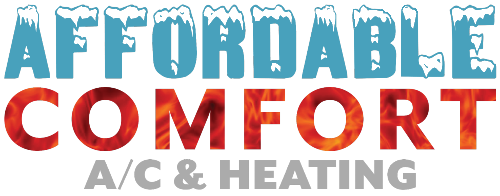Factors Which Are Affected When an HVAC is Too Large
As the long, hot Phoenix summer draws to an end, we are all grateful we have had quality HVAC performance. But, it isn’t only the weather which affects an HVAC’s ability to perform. Today, we’re going to talk about the size of an HVAC and how having a unit which is too large for a home will impact the unit’s ability to perform correctly.
WEAR AND TEAR
Bigger isn’t better.
Of course, if the HVAC is too small for a home, it won’t cool properly. By that logic, it would seem that bigger is better, right? But, that isn’t true because of the way an HVAC works. If the HVAC is too big, it will run in short spurts since it hits the target temp in a hurry, which means the unit starts and stops repeatedly. And guess what wears out heating and cooling equipment faster than anything? Starts and stops! So a unit which runs for 20 minutes is better than one which runs for five minutes on four different occasions.
FILTRATION
If an HVAC is too large, the home cools too quickly, and there will also be less time for the air to move through the filter. Filtration of the inside air results in the dust and debris a homeowner will typically see in the filter during replacement. That dust comes from inside the home. If the house isn’t filtered correctly, the dirt and debris stay in the home for the inhabitants to breathe.
Typical culprits such as dust, pollen, pet dander, and secondhand smoke are the types of pollutants caught by an HVAC filter. So having a unit which runs for a more extended period offers the chance for better air quality.
The frequency with which a homeowner changes the filter and type of filter also impact the air quality, but a filter which collects a smaller size of pollutants is not necessarily better because it can lower the draw and be hard on the HVAC unit.
HUMIDITY
One of the tasks of an HVAC system is to lower the humidity in the home. Low humidity doesn’t seem like such a big deal for those of us living in the desert until monsoon season when the humidity levels can be uncomfortable.
Because the coils are cold, they collect condensation, which then drops into the pan and is pumped out by the condensate pump. If the coils never drip or don’t drip enough to fill the condensate pan to a level that will activate the condensate pump, the moisture will evaporate back into the home before it’s discharged. So the humidity level remains the same and lowers the air quality in the house.
HOW HVAC SIZE IS CALCULATED
The size of an HVAC is calculated using many factors such as the square footage of the home, the number, and placement of windows, whether the house has high ceilings, the insulation rating, and relative temperatures. A professional HVAC installer also has something called the Manual J calculations, a more precise means of rating the needs of a home and matching it with the size of an HVAC. You can see an example here. This rating will help your HVAC installer ensure that a home will be comfortable from season to season, year after year.
Trust locally-owned and operated Affordable Comfort A/C and Heating for HVAC preventative maintenance and thermostat services. Call 602-574-1205 to schedule a consultation.

